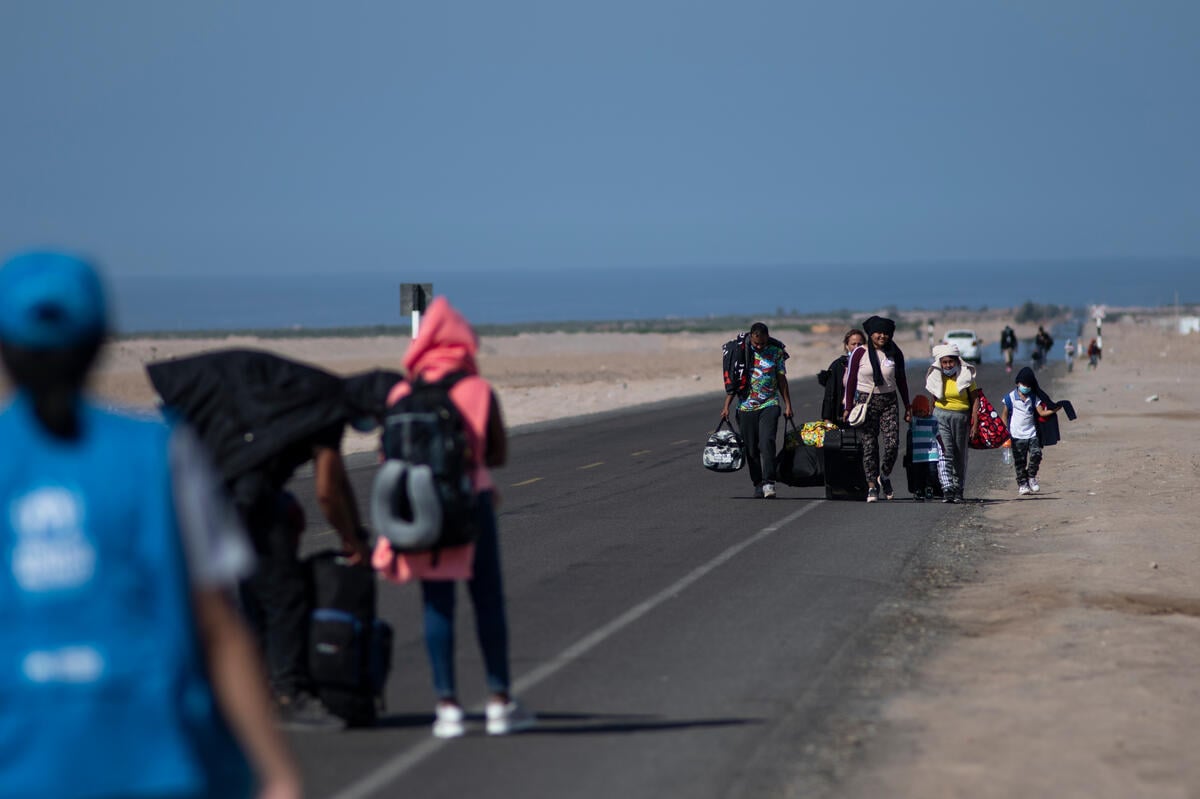Complementary pathways for admission to third countries
Do refugees have passports? What about stateless persons?
Most passports are issued by states to their citizens. They indicate that the person is welcome back to the issuing country and they offer the protection of consular support to travelers. Visa decisions in destination countries rely on passport holders returning at the end of the agreed period. Refugees need protection against being returned to danger in their country of origin, meaning that the use of a national passport poses a risk if the work, study or other visa expires without another option.
Stateless persons are not national to any country and thus have no way to apply for a national passport.
When a national passport is not available or unsafe to use, refugee and statelessness travel documents provide a way forward.
Why refugees need travel documents
Similar to passports, travel documents are used to facilitate travel. In addition, they provide several other benefits:
- Open up job and study opportunities in third countries: Refugees often struggle to work or study in their countries of asylum. With a travel document in hand, they can take up study or professional opportunities in countries other than their countries of asylum. In this way, refugees can use their skills, become more self-reliant, build a better future for themselves and their families, while also helping address skill shortages globally.
- Support family reunification, resettlement and voluntary repatriation.
- Support identity management and enable access to basic services and rights: refugees can use travel documents as proof of identity to access bank and financial services or send remittances to family and friends, among other things.
- Avoid the risk of refoulement: Access to travel documents can ensure that refugees will have a safe place to return to and not be at risk of being forced to return to the country they fled from.
- Encourage safe and regular movement: Travel documents can reduce the risk of irregular movement which potentially exposes refugees and stateless persons to exploitation, abuse, violence and human trafficking, including on dangerous land and sea routes.
- Boost meaningful refugee participation: With a travel document in hand, refugees are able to travel across the world to participate in international fora, speak about refugee issues and reach decision-making tables.
Keep in mind:

A special characteristic of complementary pathways is that refugees can access them directly using publicly available information and existing administrative mechanisms.
Thus, refugees can find their own solutions. This is already happening without the help of humanitarian actors, as many refugees use existing avenues to move across borders for work, family or education reasons. However, others who could be eligible to do the same often face legal, administrative and practical issues inherent in their refugee situation.
While they may initially provide temporary stay, complementary pathways should be part of a progressive approach to comprehensive solutions.
They should ensure access to rights and eventual enjoying of a sustainable durable solution. These pathways allow refugees to contribute to their future solutions by harnessing their existing capacities and providing opportunities to learn new skills.

History of travel documents and the “Nansen passport”
The idea of refugee travel documents dates back to Fridtjof Nansen. Appointed as the League of Nations High Commissioner for Refugees in 1921, Nansen promoted the idea of travel documents for refugees and from 1922 issued the first version (“the Nansen passport”) through the League of Nations.
Refugee travel documents have been issued by States since the 1940s. The right of every refugee and stateless person to a travel document issued by their country of lawful stay is outlined in Article 28 of the 1951 Refugee Convention and its 1967 Protocol and the 1954 Convention relating to the Status of Stateless Persons (PDF).














